UpBeing User Journey
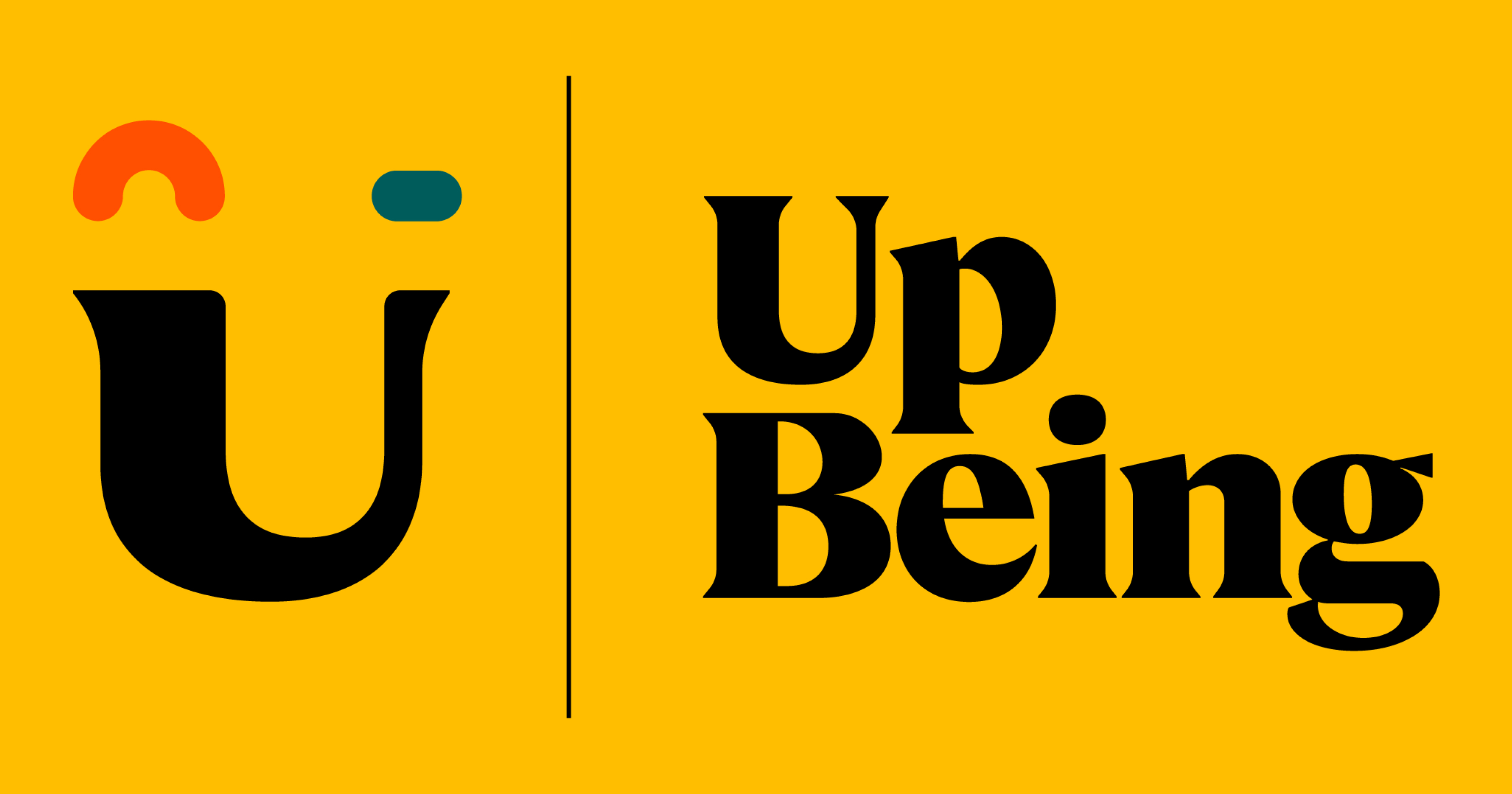
What is UpBeing?
UpBeing is a digital wellness app designed to help users track their
wellbeing and share emotions with close friends and loved ones. It
offers features like daily mood tracking, journaling, and
participation in user-centered wellbeing communities. My role at
UpBeing involves user experience research, product and data analysis,
and the development of an LLM-powered chatbot.
In this project, I'll walk you through the user journey on UpBeing,
sharing insights from the data that tell the story of our users—from
their first interaction with the app to how they engage with our
community. For privacy reasons, this analysis only includes data up to
May 2024.
New Users
In early May, a new wave of users joined UpBeing, predominantly from Canada, with others coming from countries like the UK, Philippines, Singapore, and Australia. How did they find us? Mostly through social media ads, word of mouth, and search engines. We're targeting a young demographic, and it's working—most users are in the 18-30 age range.
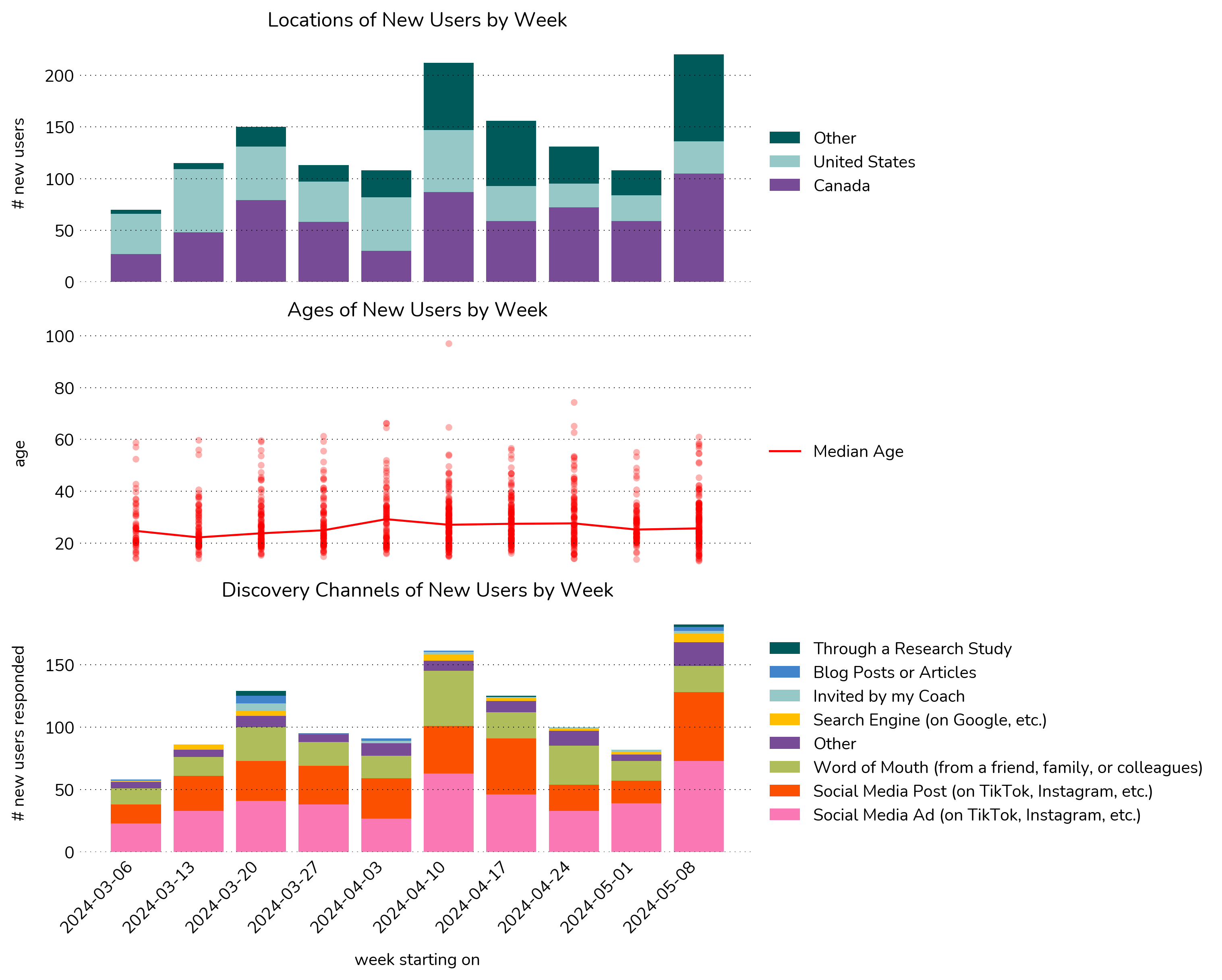
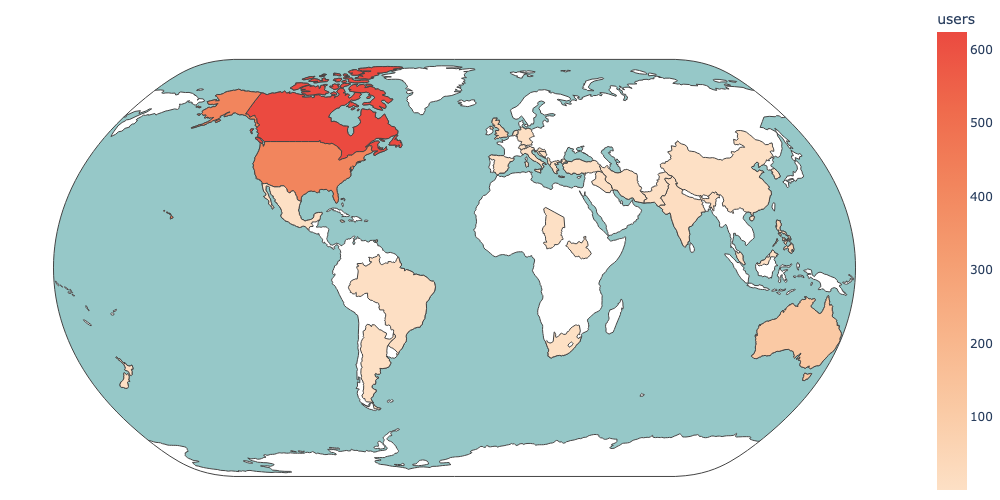
Our growth reached a significant milestone, hitting 2000 users in May 2024, particularly boosted when we included a new 'create community' feature within the app.
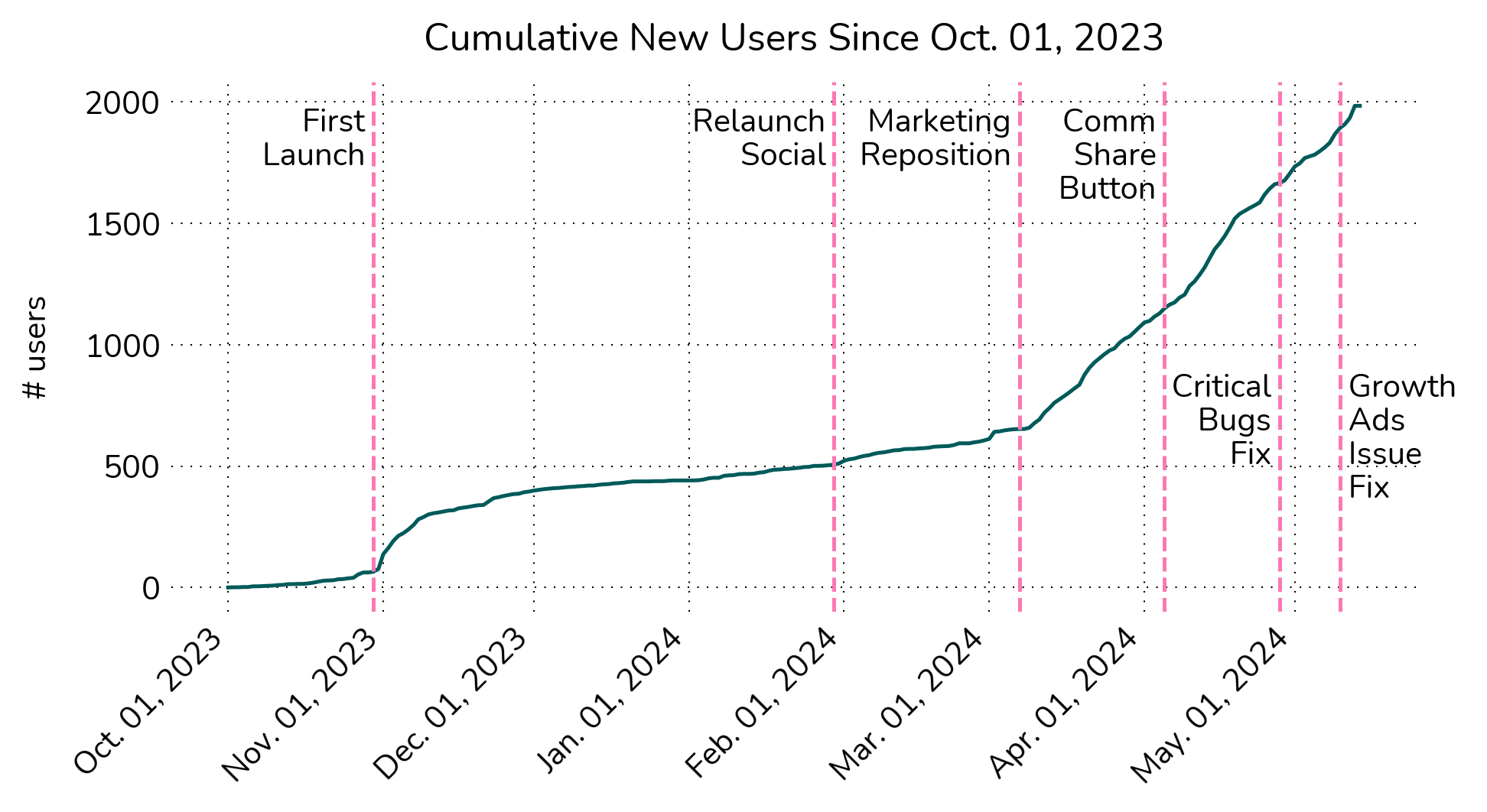
On April 21, we introduced a feature that allows users to capture more complex emotional states by selecting multiple emotions during a check-in. The response was positive. Users were not just picking one emotion—they were using the feature to express the full spectrum of what they were feeling. This suggests a real need for a more nuanced way of expressing emotions, and our users seem to appreciate this added depth.
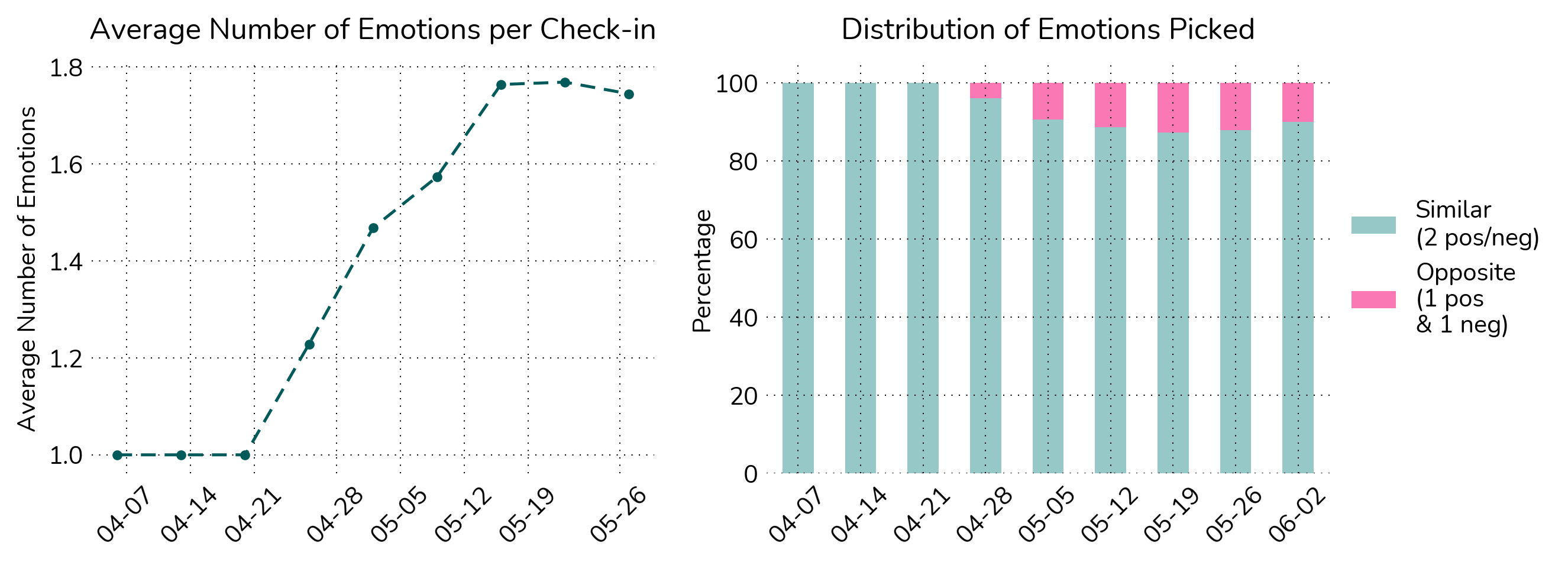
Social Inner Circle
One of UpBeing's unique features is the 'inner circle,' where users invite close friends to join and share emotional updates. However, only about 10% of new users sent out invites, with a mere 3% forming successful bonds. Recognizing the low invitation rate, I hypothesized that the single method of inviting friends via text messages was a limitation. To address this, I collaborated with our dev and design teams and implemented an alternative invitation approach—'copy and share link'—resulting in a 30% increase in the invitation rate.
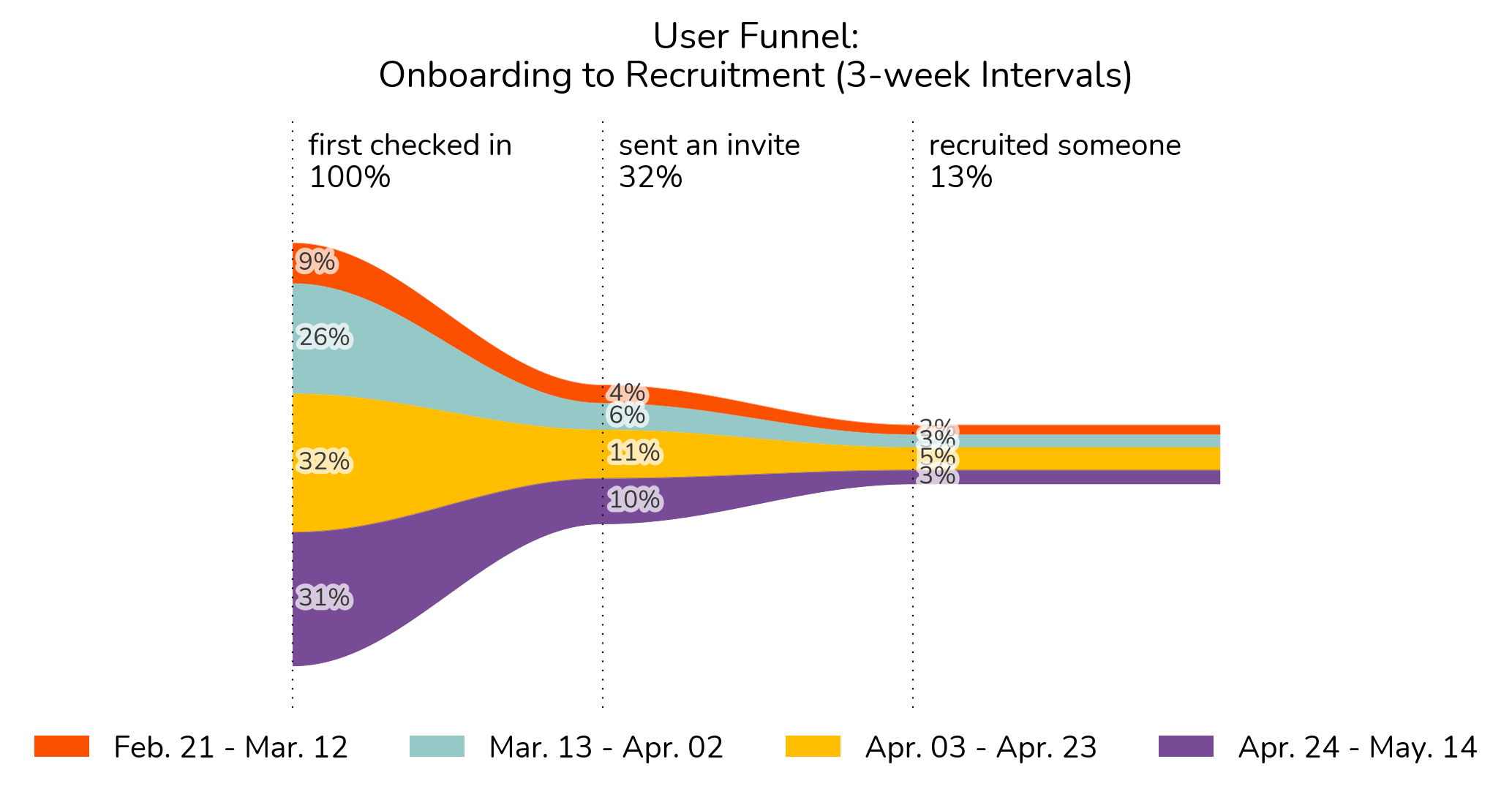
Why do we focus on these invitations? Because they matter—a lot. Based on my analysis, users who formed bonds (62%) were 2.3 times more likely to stay active on UpBeing after 21 days than those who went it alone (27%).
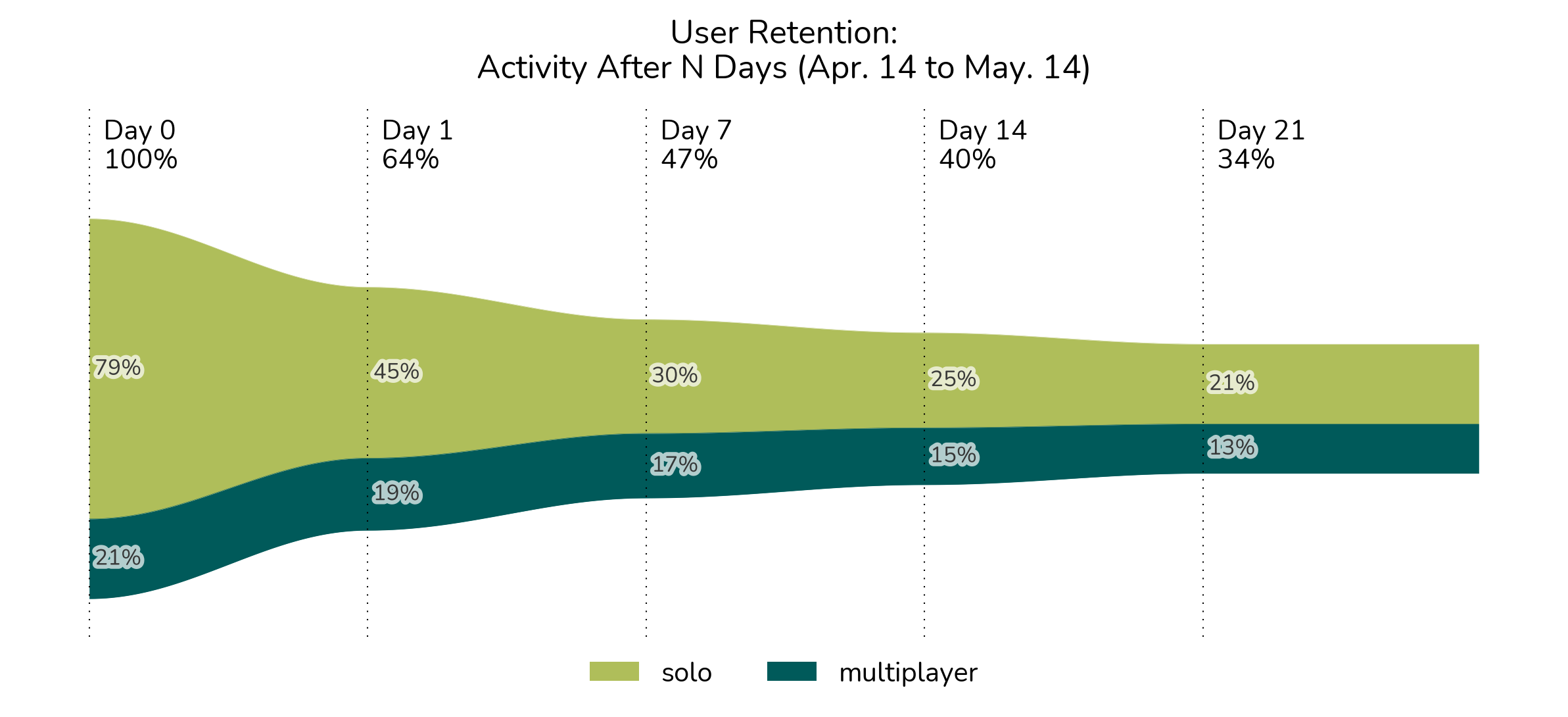
How about the impact of being in a community? I was curious if joinig a community on UpBeing can also have a positive impact on user retention. I divided users into 4 categories:
- Solo players (with no bonds or community)
- Players with bonds but no community
- Players with community but no bonds
- Players with both community and bonds
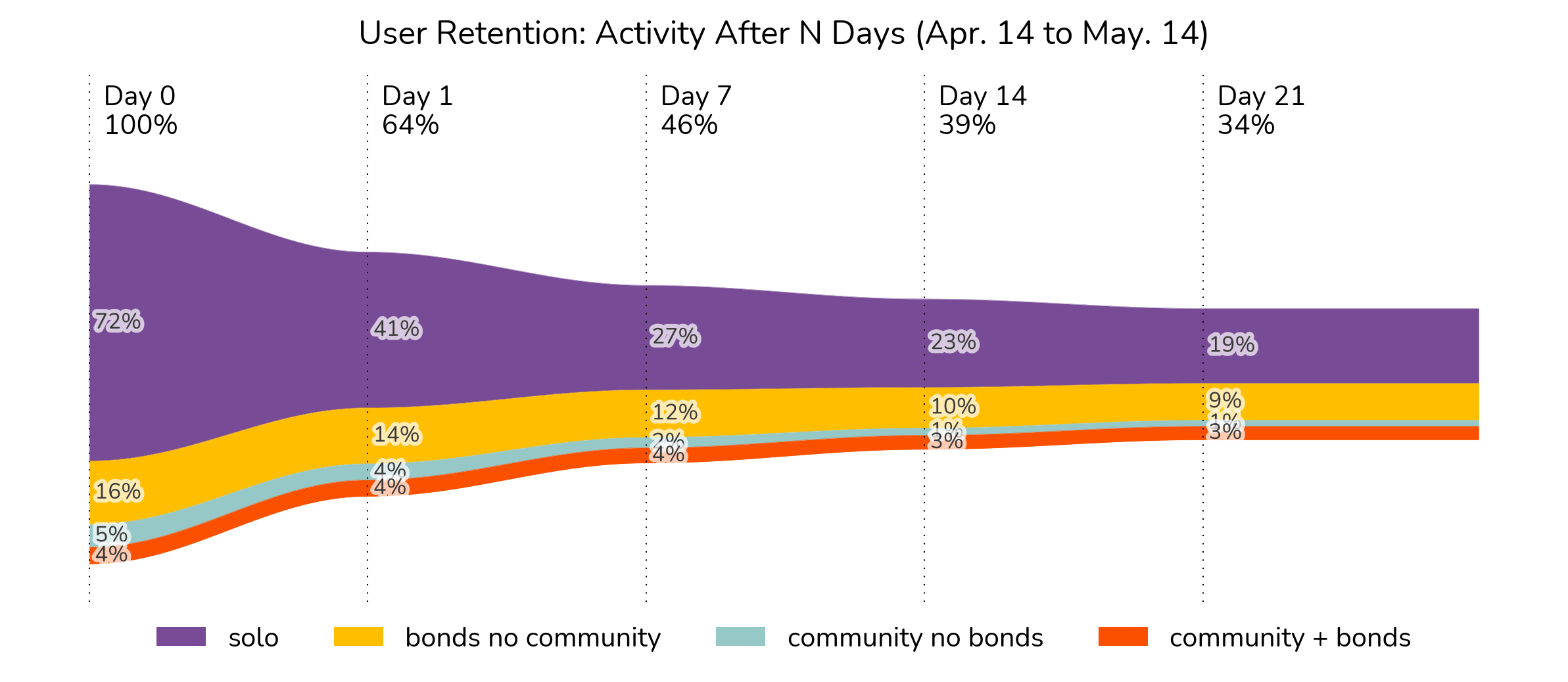
I found that for new users who joined UpBeing in the last 30 days, having both bonds and being part of communities is associated with a higher user retention rate. Forming bonds has a stronger association with overall user retention than just joining a community.
Community
Communities on UpBeing provide aggregated and anonymized views of wellbeing data, offering users a sense of collective belonging.
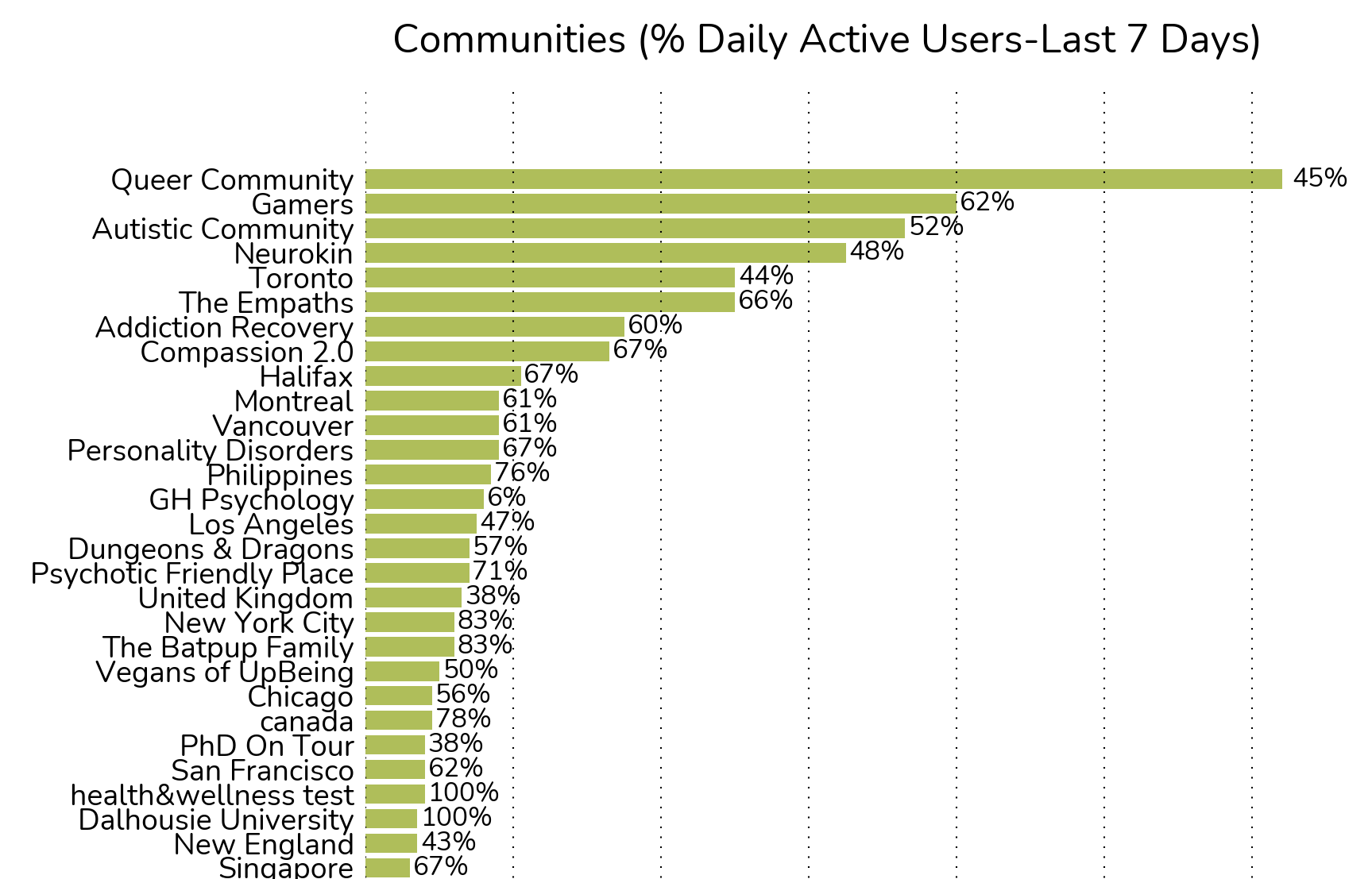
As of mid-May 2024, we had 137 communities, with users often joining multiple groups.
.png)
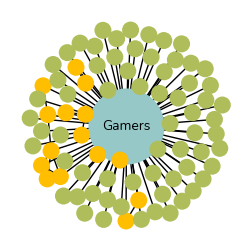
Our Queer Community exhibited the fastest growth rate, followed by Gamers and the Autistic Community. Within these communities, interconnections have formed, with the Gamers community showcasing a group of nine friends.
Identifying Persistent Users
What can be the traits and predictors of our "power users"—those who remain active for at least 14 days? After experimenting with various methods, I discovered that a random forest classifier trained on three variables (attitude, energy scores from the first check-in, and whether a bond was formed within the first three days) could predict user persistence with 75% accuracy.
For users who signed up between January 1st and May 15th, I took attitude and energy scores from the very first check-in. The third variable was a binary feature indicating whether the user acquired a bond within the first 3 days of onboarding. I then trained a random forest classifier on a subset of the data (the training set) and determined their accuracies on a held-out test set. I repeated this process 20 times (with different train-test splits) and obtained a mean accuracy score of 75%. Below are 6 trees of a trained random forest classifier (with 10 trees), showing the learned decision paths to classify users as "persistent" (pink) or active for less than 14 days (blue).
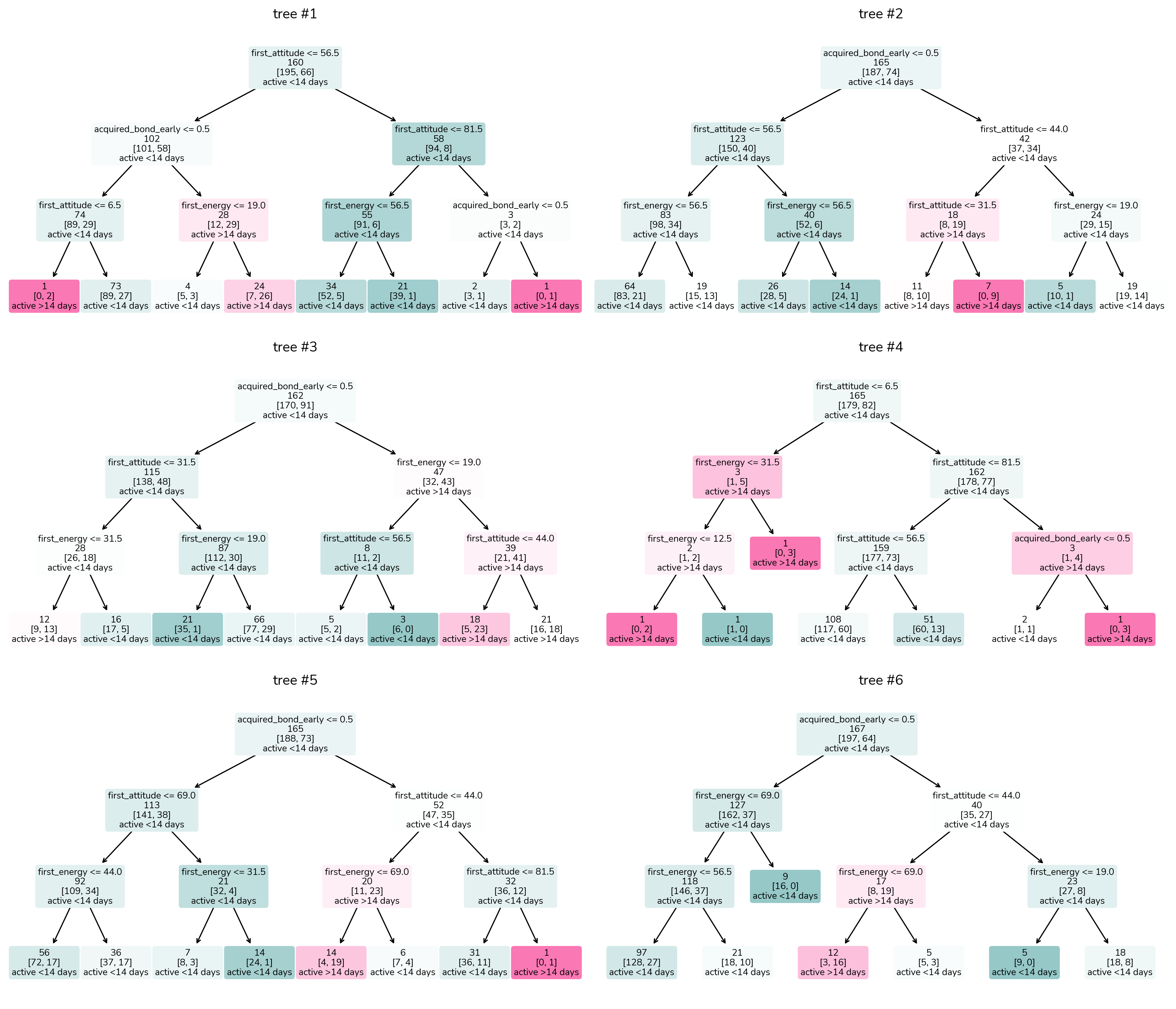
From these random forests, I extracted feature importance scores to see how they rank in terms of predictive capacity. Despite knowing that bonds are important in driving user retention, it is the least important of the 3 variables here. Interestingly, attitude during the first checkin is the most relevant feature. This makes sense, intuitively. I'm more likely to keep doing something if I'm in a good mood the first time I try it!
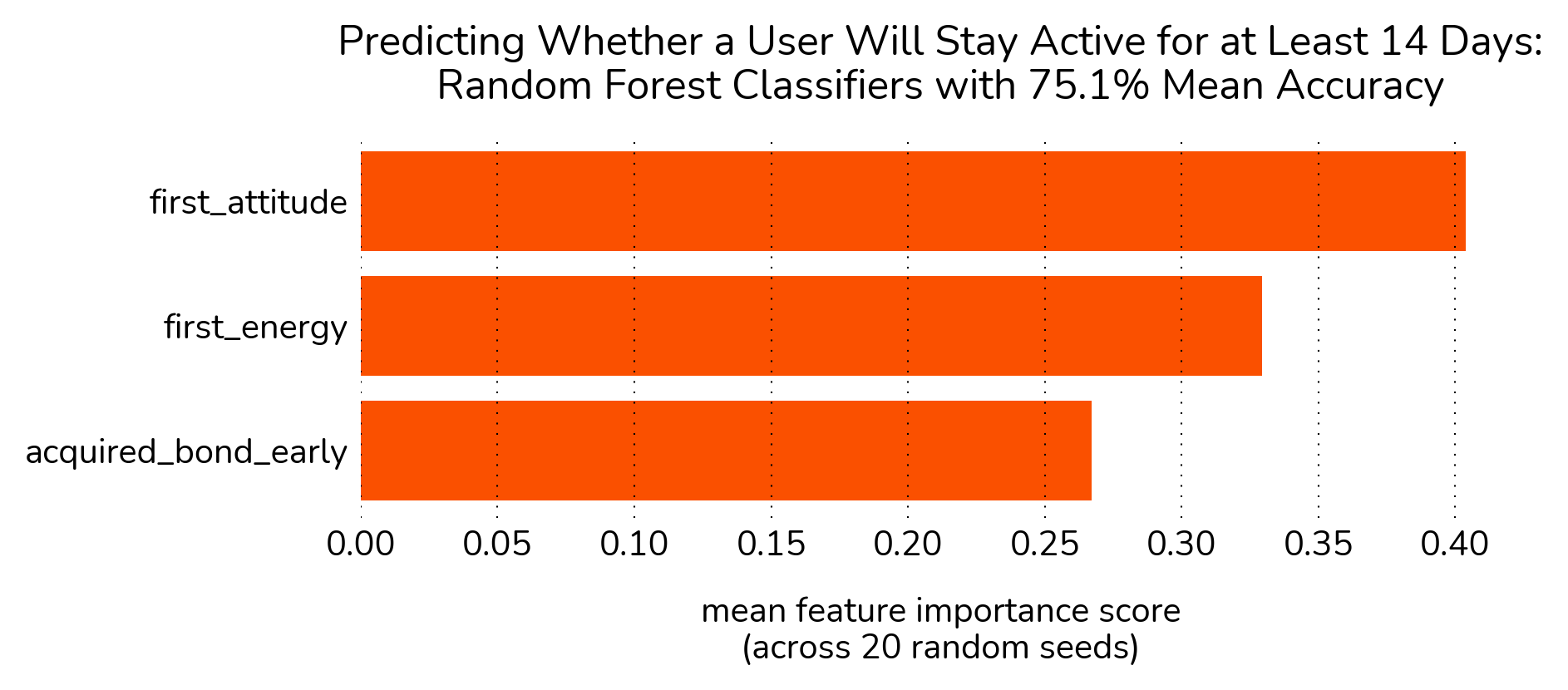
This could also imply that we should focus on ensuring users' first
experience with UpBeing is a positive one. What if we generate an
onboarding insight right after users finish onboarding with us? This
could be a great opportunity to engage users and showcase some of our
app features (e.g., daily insights, social circle, and community
insights).
After writing out code and collaborating with the dev teams, we
implemented this feature. If you try out UpBeing today, you'll see the
onboarding insight feature I worked on in action! Here's a sample
video I recorded during the development stage:
Summary & Next Steps
What can we take away from this journey? We've learned that social features are crucial, and even small changes in how we connect people can make a big difference. Communities play a key role in keeping users engaged, and we need to keep enhancing those spaces.
- Boost First-Time User Experience: Since users' initial attitudes play a big role in their long-term engagement, let's explore ways to make their first experience as positive as possible. This could include personalized greetings, onboarding tutorials, or even mood-boosting activities.
- Expand Community Interaction: Develop tools and activities that encourage deeper interaction within communities, such as poll questions or collaborative wellbeing challenges, to strengthen the sense of belonging and engagement.
- Implement Gamification Elements: Introduce gamification features such as badges, streaks, or rewards for consistent check-ins and community engagement.
- Personalized Content and Notifications: For instance, if a user frequently checks in with certain emotions, provide tailored notifications and reminders to support them.
- Strengthen Support Systems: Introduce resources or partnerships with mental health professionals to provide users with additional support.
- Python
- Data Science
- Product Analysis
- User Analysis
- ML Models
- Market Analysis